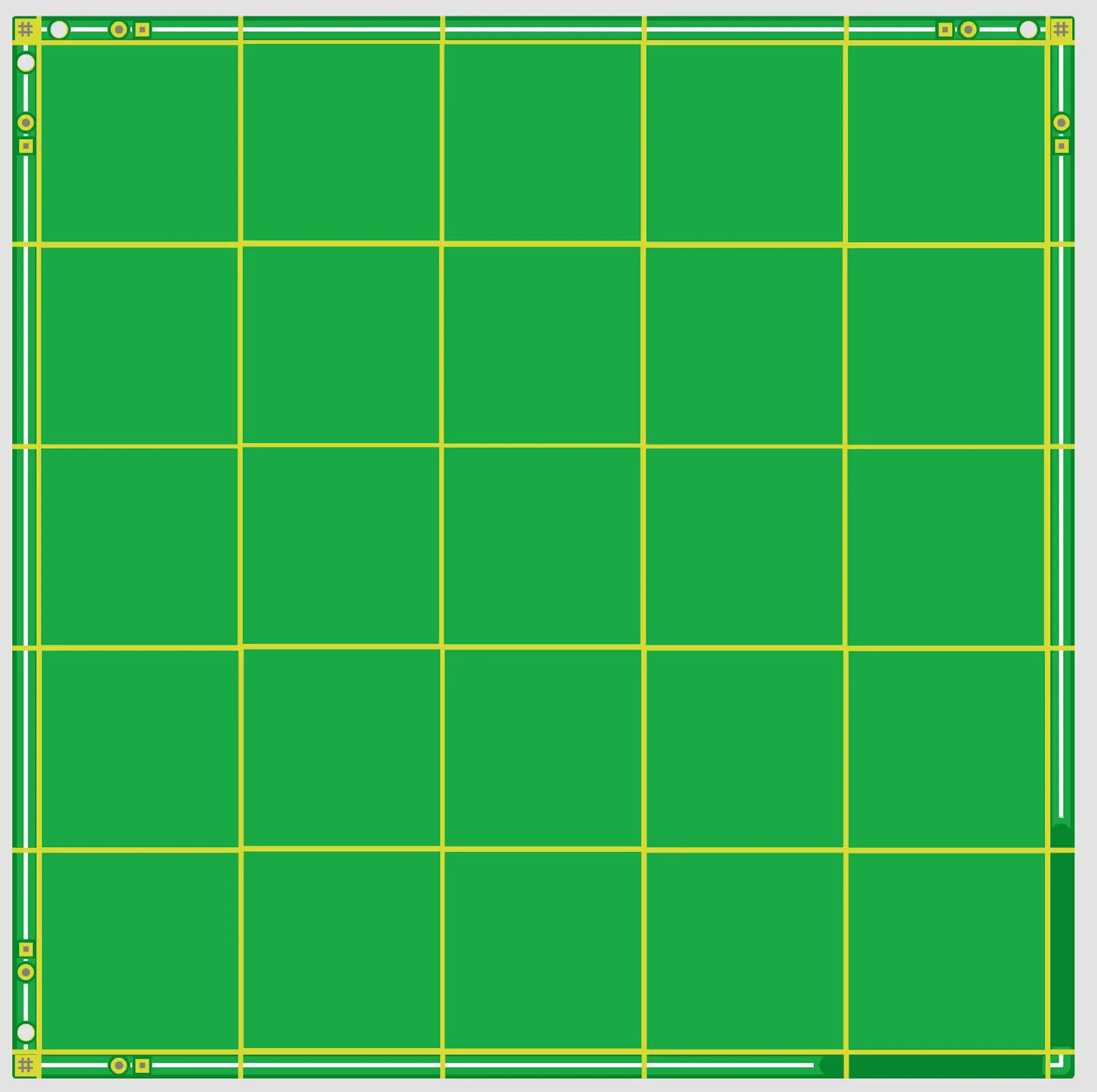Defining Panel by Customer
1. What is meant by Panel by Customer?
A customer panel refers to a PCB panel layout that has already been organized and submitted by the customer. This may include panelized Gerber data or a drawing that specifies the arrangement. In other words, the customer takes responsibility for defining the panel structure, including borders or other special features, and that exact design is used for manufacturing.
2. In what situations is a customer-provided panel applicable?
Panels created and supplied by customers are generally required when:
The customer sends Gerber files where multiple boards are already arranged into a panel.
A detailed panel drawing is provided that specifies the customer’s requirements.
Special conditions exist—for example, unique borders, slots, or non-standard arrangements—where the customer creates their own complete panel.
3. Are border frames added to customer panels?
Usually, yes. A border frame of 5 mm is the common guideline, even when the panel is provided by the customer. This ensures stable handling in manufacturing.
4. How is the number of unique designs on a panel determined?
The count of unique designs is found by checking how many different PCB layouts are combined within the same panel. Each distinct board style present in the merged Gerber set is considered a separate design.
5. Can you give an example of how to count designs on a panel?
Of course! Below are a couple of examples that show how unique PCB types are identified within panels:

Figure 1: The panel shown contains 6 different PCB designs.

Figure 2: In this panel setup, there are 3 sub-panels:
Panel 1 includes only 1 unique design.
Panel 2 contains 4 types of PCBs.
Panel 3 is made up of 5 distinct layouts.
6. What types of Board separations are supported in Panel by customers?
If the panel outline is prepared by the customer, both V-scoring (V-cut) and break-routing are acceptable methods for separation. For panels where boards vary in shape, break-routing is usually the preferred option.
Defining Panel by pcbxpress
7. What is the meaning of Panel ups?
“Panel ups” describes how many times a single board is duplicated along the X and Y directions of the panel. For example, repeating a PCB twice along the X-axis and three times along the Y-axis would result in 6 panel ups (2 × 3).
8. How does Pcbxpress Market choose the Panel ups?
When PCB dimensions are very small—generally under 20 mm by 20 mm—we recommend preparing a panel instead of fabricating the PCB individually. In such cases, the number of “ups” is selected to maximize material usage and production efficiency.
9. What are the guidelines for panel borders?
The recommended rule is to keep a minimum 5 mm border around all sides of the panel. For cases using break-routing, an additional 2 mm space should be allocated for separation routing.
10. What are the guidelines for choosing the distance between PCBs in a Panel?
The spacing required depends on the separation method: panels with V-cuts allow no gap (0 mm), while break-routed panels need at least 2 mm clearance. For small or round PCBs, a 10 mm gap is preferred for better rigidity of the panel.
11. Which types of board separation are supported in the Panel by customers?
Both V-scoring and break-routing are accepted. Typically, V-cut is best when the PCB is rectangular or carries heavy components, while break-routing is better suited to irregular or non-rectangular designs.
12. Give an example of a Pcbxpress Panel separated with the break routing method.
Here’s an illustrative example showing how a Pcbxpress-manufactured panel looks when its boards are separated using the break-routing technique:

13. Give an example of a Pcbxpress Panel separated with the V-cut method.
This example image demonstrates a panel made by Pcbxpress where the boards are separated using the V-scoring (V-cut) method:
